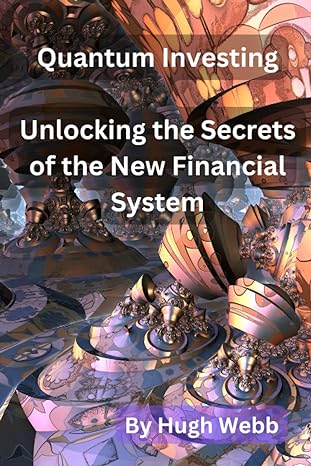Question
Capital Structure: Solar Technologies Inc. -- Mini-Case Charlie Smith, CEO of Solar Technologies, is concerned about his firms level of debt financing. The company uses
Capital Structure: Solar Technologies Inc. -- Mini-Case Charlie Smith, CEO of Solar Technologies, is concerned about his firms level of debt financing. The company uses short-term debt to finance its temporary working capital needs, but it does not use any permanent (long-term) debt. Other solar technology companies average about 30 percent debt, and Mr. Smith wonders why they use so much more debt, and what its effects are on stock prices. To gain some insights into the matter, he poses the following questions to you, his recently hired assistant: A. Business Week recently ran an article on companies debt policies, and the names Modigliani and Miller (MM) were mentioned several times as leading researchers on the theory of capital structure. Briefly, who are MM, and what assumptions are embedded in the MM and Miller models?
B. Assume that firms U and L are in the same risk class, and that both have EBIT = $500,000. Firm U uses no debt financing, and its cost of equity is rsU = 14%. Firm L has $1 million of debt outstanding at a cost of rd = 8%. There are no taxes. Assume that the MM assumptions hold, and then: Find v, s, rs, and WACC for firms U and L. Graph (a) the relationships between capital costs and leverage as measured by D/V, and (b) the relationship between value and D.
C. Using the data given in part B, but now assuming that firms L and U are both subject to a 40 percent corporate tax rate, repeat the analysis called for in B(1) and B(2) under the MM with-tax model.
D. Now suppose investors are subject to the following tax rates: TD = 30% and Ts = 12% What is the gain from leverage according to the Miller Model? How does this gain compare to the gain in the MM model with corporate taxes? What does the Miller model imply about the effect of corporate debt on the value of the firm, that is, how do personal taxes affect the situation?
E. What capital structure policy recommendations do the three theories (MM without taxes, MM with corporate taxes, and Miller) suggest to financial managers? Empirically, do firms appear to follow any one of these guidelines?
F. How is the analysis in part C different if firms U and L are growing? Assume that both firms are growing at a rate of 7 percent and that the investment in net operating assets required to support this growth is 10 percent of EBIT.
G. What if Ls debt is risky? For the purpose of this example, assume that the value of Ls operations is $4 millionwhich is the value of its debt plus equity. Assume also that its debt consists of 1-year zero coupon bonds with a face value of $2 million. Finally, assume that Ls volatility is 0.60 (s = 0.60) and that the risk free rate is 6 percent.
H. What is the value of Ls stock for volatilities between 0.20 and 0.95? What incentives might the manager of L have if she understands this relationship? What might debtholders do in response?
Step by Step Solution
There are 3 Steps involved in it
Step: 1

Get Instant Access to Expert-Tailored Solutions
See step-by-step solutions with expert insights and AI powered tools for academic success
Step: 2

Step: 3

Ace Your Homework with AI
Get the answers you need in no time with our AI-driven, step-by-step assistance
Get Started


